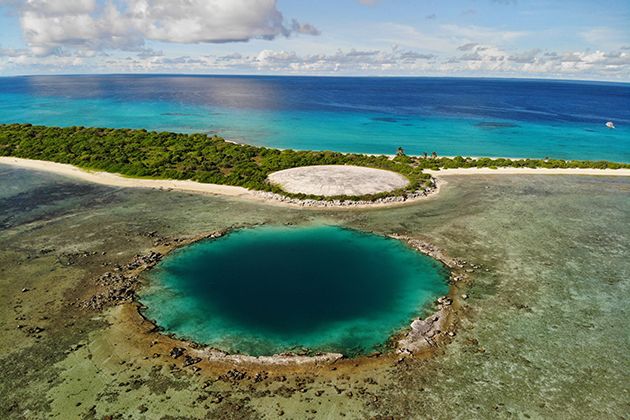If you’ve got a mountain of digital data to store but don’t necessarily need to access it every day, tape cartridges are the way to go. Twelve terabytes of storage will set you back about $100 these days, but in the coming years, Fujifilm believes it can push the technology to 400TB capacities in a single cartridge.
Interesting technology for myriad reasons. Game changer for people in underdeveloped coastal areas.
The World’s Only Low Cost Portable Seawater Desalination Device. Ultimate Survival Tool | Check out ‘QuenchSea: Turn Seawater into Freshwater’ on Indiegogo.
Sure, the Harley-Davidson LiveWire electric motorcycle may be designed for urban riders, but that doesn’t mean it can’t handle long distance trips. At least that’s what Diego Cardenas just proved after completing a ride from the US-Mexico border to the US-Canada border to celebrate his 50th birthday!
July 4, 2020 Message from Space
Posted in space travel
“Even though we are living during unprecedented, challenging times, the spirit and resolute will of our country and all Americans has never been stronger.”
NASA Astronauts Chris Cassidy, Doug Hurley, and Bob Behnken, the three Americans living in space, paused this week to commemorate the nation’s 244th birthday. They shared this message, featuring the famous flag that flew on the first and last space shuttle missions and will be returned to Earth by Hurley and Behnken later this year.
What money should be has been explored by more than one economist. What it is, strange as it may sound, is also up for debate. Yet amidst these disputes, practical and abstract, there is consensus.
At this time the entire crypto market is valued between 380 and 560 billion USD. The value of all the world’s stocks is around 70 trillion USD. The daily volume of the Forex is 5.1 trillion USD. Despite the excitement it periodically sparks in mass media and high finance circles, crypto is barely a drop in the bucket.
As I stated in my response to Robert Shiller’s critique of Bitcoin, tokenization is a means of dividing an asset. Tokenization, easily dividing an asset among stakeholders, is a strength of blockchain technology. Tokens can represent abstract entities issued on the blockchain, but they can also be tethered to a piece of real estate, a work of art, a trademark, or a freighter of Chilean copper.
The DOE says that radioactive leakage from Runit Dome, a respository for U.S. atomic waste, is insignificant. Marshall Islands leaders are skeptical.
How does the brain distinguish between the “self” and the “other”? A new study gives a clue.
The rise of antibiotic-resistant bacteria presents an ominous threat for humankind, with these so-called superbugs projected to kill millions of people annually by midway through the century. Scientists at the University of Exeter have developed a promising technique that could help us keep these crafty foes in check, by quickly illuminating bacteria when antibiotics have had the desired effect.
Such is the seriousness of superbug dilemma that one UK government report recently found they could kill 10 million people a year by 2050 unless some new solutions are found. These are bacteria that have evolved to become resistant to our very best drugs, and they could possibly cast the world back into the dark ages of medicine if they are simply left to do their thing.
While this resistance occurs naturally as bacteria evolve, one of the major contributing factors to its acceleration is the overuse of antibiotics. Prescribing antibiotics for humans and having them take drugs either for the wrong condition or consume more than they need, creates more opportunities for the bacteria to evolve, ramping up the overall trend.
In a paper that made the cover of the journal Applied Physics Letters, an international team of researchers has demonstrated an innovative technique for increasing the intensity of lasers. This approach, based on the compression of light pulses, would make it possible to reach a threshold intensity for a new type of physics that has never been explored before: quantum electrodynamics phenomena.
Researchers Jean-Claude Kieffer of the Institut national de la recherche scientifique (INRS), E. A. Khazanov of the Institute of Applied Physics of the Russian Academy of Sciences and in France Gérard Mourou, Professor Emeritus of the Ecole Polytechnique, who was awarded the Nobel Prize in Physics in 2018, have chosen another direction to achieve a power of around 1023 watts (W). Rather than increasing the energy of the laser, they decrease the pulse duration to only a few femtoseconds. This would keep the system within a reasonable size and keep operating costs down.
To generate the shortest possible pulse, the researchers are exploiting the effects of non-linear optics. “A laser beam is sent through an extremely thin and perfectly homogeneous glass plate. The particular behavior of the wave inside this solid medium broadens the spectrum and allows for a shorter pulse when it is recompressed at the exit of the plate,” explains Jean-Claude Kieffer, co-author of the study published online on 15 June 2020 in the journal Applied Physics Letters.








